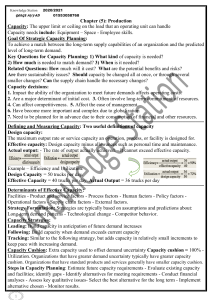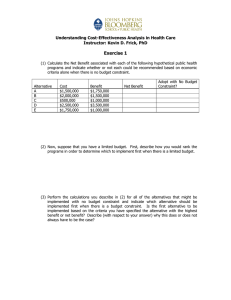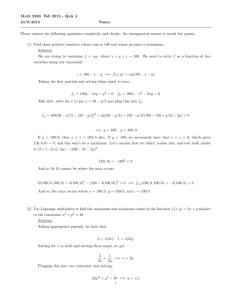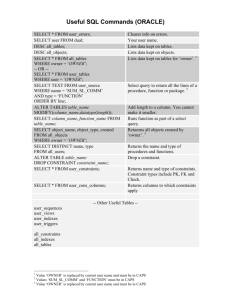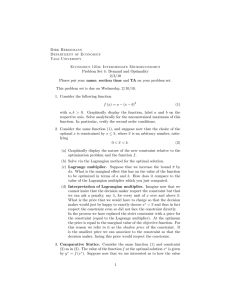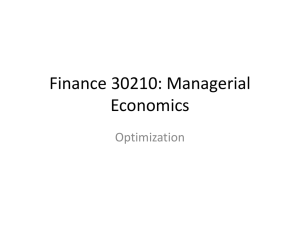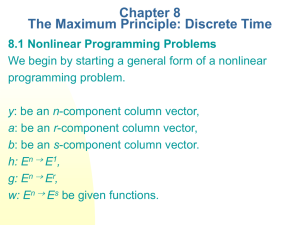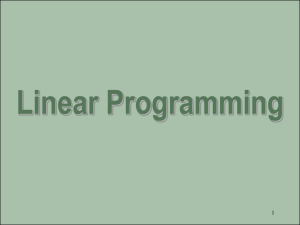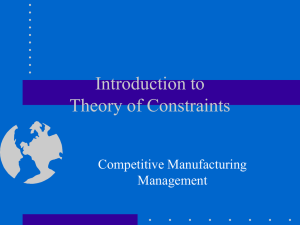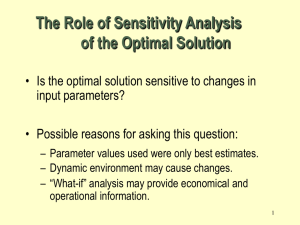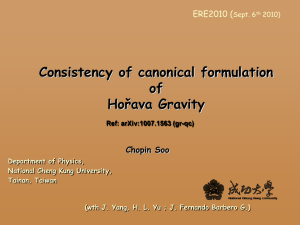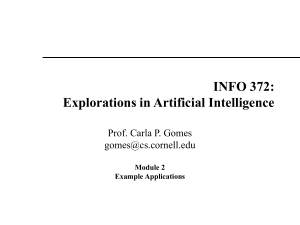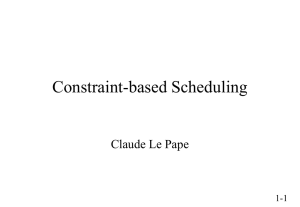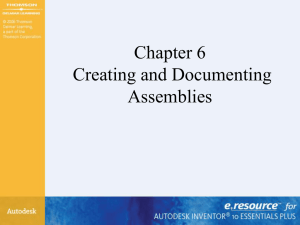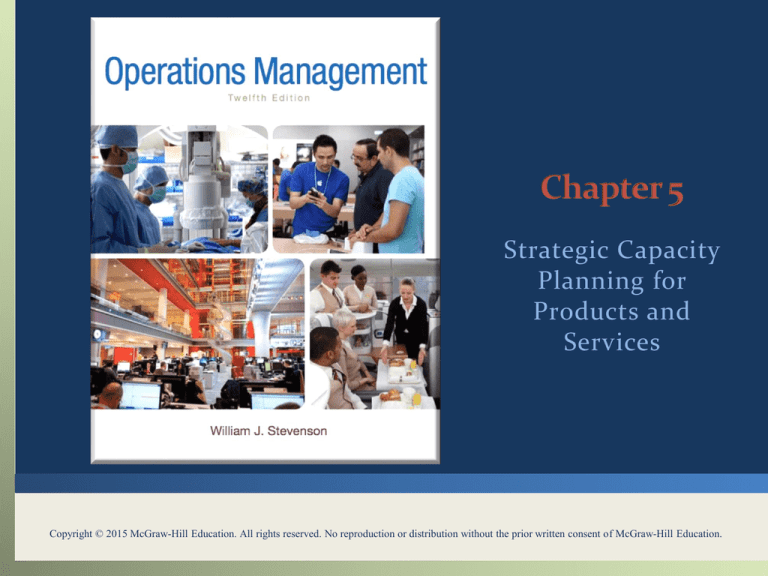
Strategic Capacity
Planning for
Products and
Services
Copyright © 2015 McGraw-Hill Education. All rights reserved. No reproduction or distribution without the prior written consent of McGraw-Hill Education.
You should be able to:
LO 5.1
LO 5.2
LO 5.3
LO 5.4
LO 5.5
LO 5.6
LO 5.7
LO 5.8
Name the three key questions in capacity planning
Explain the importance of capacity planning
Describe ways of defining and measuring capacity
Name several determinants of effective capacity
Discuss factors to consider when deciding whether to
operate in-house or outsource
Discuss the major considerations related to developing
capacity alternatives
Describe the steps that are used to resolve constraint
issues
Briefly describe approaches that are useful for evaluating
capacity alternatives
5-2
Capacity
The upper limit or ceiling on the load that an operating
unit can handle
Capacity needs include
Equipment
Space
Employee skills
LO 5.1
5-3
Key Questions:
What kind of capacity is needed?
How much is needed to match demand?
When is it needed?
Related Questions:
How much will it cost?
What are the potential benefits and risks?
Are there sustainability issues?
Should capacity be changed all at once, or through several smaller
changes
Can the supply chain handle the necessary changes?
LO 5.1
5-4
Capacity decisions
1.
impact the ability of the organization to meet future demands
2. affect operating costs
3. are a major determinant of initial cost
4. often involve long-term commitment of resources
5. can affect competitiveness
6. affect the ease of management
7. have become more important and complex due to globalization
8. need to be planned for in advance due to their consumption of
financial and other resources
LO 5.2
5-5
Measure capacity in units that do not require
updating
Why is measuring capacity in dollars problematic?
Two useful definitions of capacity
Design capacity
The maximum output rate or service capacity an operation,
process, or facility is designed for
Effective capacity
Design capacity minus allowances such as personal time and
maintenance
LO 5.3
5-6
Facilities
Product and service factors
Process factors
Human factors
Policy factors
Operational factors
Supply chain factors
External factors
LO 5.4
5-7
Once capacity requirements are determined, the organization
must decide whether to produce a good or service itself or
outsource
Factors to consider:
Available capacity
Expertise
Quality considerations
The nature of demand
Cost
Risks
LO 5.5
5-8
Things that can be done to enhance capacity management:
Design flexibility into systems
Take stage of life cycle into account
Take a “big-picture” approach to capacity changes
Prepare to deal with capacity “chunks”
Attempt to smooth capacity requirements
Identify the optimal operating level
Choose a strategy if expansion is involved
LO 5.6
5-9
Constraint
Something that limits the performance of a process or system in
achieving its goals
Categories
Market
Resource
Material
Financial
Knowledge or competency
Policy
LO 5.7
5-10
1.
2.
3.
4.
5.
Identify the most pressing constraint
Change the operation to achieve maximum benefit, given
the constraint
Make sure other portions of the process are supportive of
the constraint
Explore and evaluate ways to overcome the constraint
Repeat the process until the constraint levels are at
acceptable levels
LO 5.7
5-11
Alternatives should be evaluated from varying
perspectives
Economic
Is it economically feasible?
How much will it cost?
How soon can we have it?
What will operating and maintenance costs be?
What will its useful life be?
Will it be compatible with present personnel and present
operations?
Non-economic
Public opinion
LO 5.8
5-12
Techniques for Evaluating Alternatives
Cost-volume analysis
Financial analysis
Decision theory
Waiting-line analysis
Simulation
LO 5.8
5-13
Cost-volume analysis
Focuses on the relationship between cost, revenue, and
volume of output
Fixed Costs (FC)
tend to remain constant regardless of output volume
Variable Costs (VC)
vary directly with volume of output
VC = Quantity(Q) x variable cost per unit (v)
Total Cost
TC = FC + VC
Total Revenue (TR)
TR = revenue per unit (R) x Q
LO 5.8
5-14
Cash flow
The difference between cash received from sales and
other sources, and cash outflow for labor, material,
overhead, and taxes
Present value
The sum, in current value, of all future cash flow of an
investment proposal
LO 5.8
5-15

